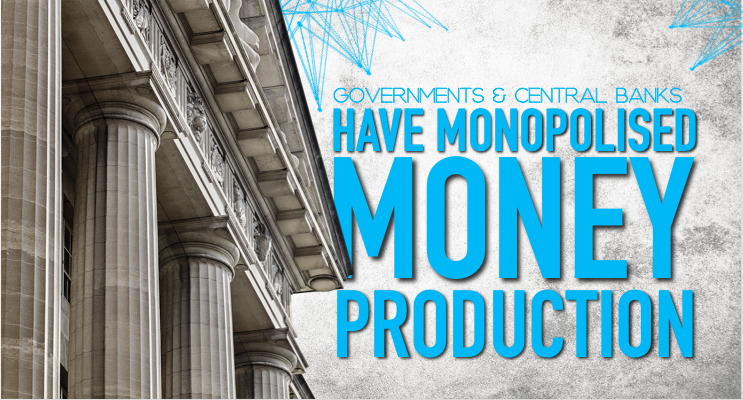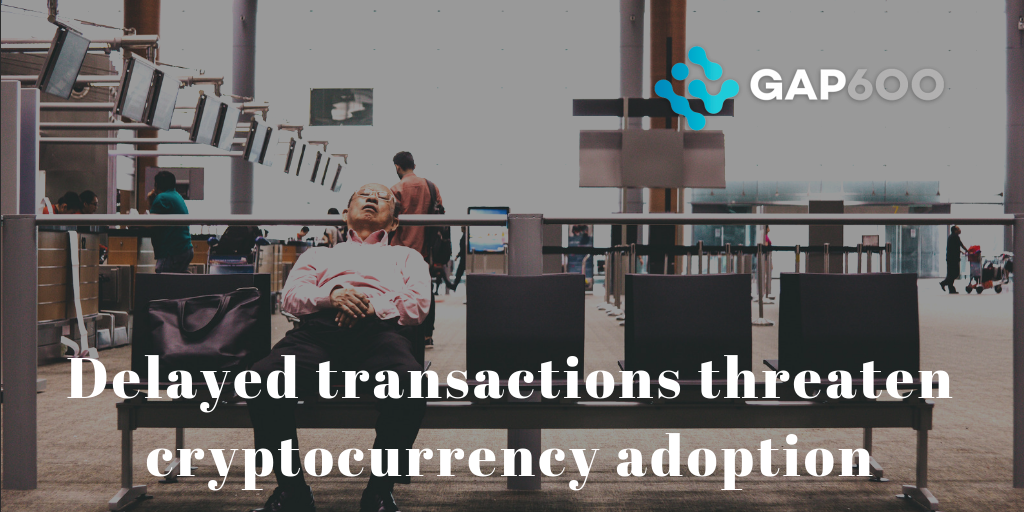Blog

Adoption is the only metric that matters in the battle for payment supremacy
Without mass adoption the network will remain largely unused and will fail to realize its grand destiny
By Daniel Lipshitz, CEO, GAP600
*This article was first published on CoinGeek on 11 March 2019.
As you may have read in a previous blog post, we passionately support cryptocurrency, with Bitcoin at the forefront. Above all else, crypto’s network effect offers the world a path to greater economic freedom and, as such, the opportunity to advance global prosperity. It is truly a wonderful, paradigm-shifting development.
Unfortunately, without mass adoption, the network will remain largely unused and will, therefore, fail to realize its grand destiny. It’s similar to holding a winning lottery ticket but never cashing it in, or operating a cargo ship that always runs at just 2% capacity. Without usage and adoption, the potential to extract the full economic value falls short. We’ve been distracted from this reality amid the hash war and hard fork melee and the prevailing bear market.

Picking a winner
While industry debate rages on, with everyone waiting for a clear market leader to emerge, it’s worth mentioning that the technical attributes and characteristics of the various cryptocurrencies merely enables them to be considered as potential denationalized, non-inflationary money systems.
Technical advantages can be helpful but are not the defining characteristics that lead to a network effect of widespread usage and, as such, adoption.
As we’ve seen many times before, the best technology doesn’t always win out. According to research by Rahul Kapoor and Ron Adner from Wharton Business School, when we talk about new technologies replacing existing ones, the more relevant factor is the ecosystem of the emergent and incumbent technologies.
Their research focuses on emergent technology risks and the capacity to innovate with the incumbent technology. The researchers define these factors as the ultimate determinants of mass adoption.
Complex factors
The same is true of cryptocurrencies. It won’t necessarily be the technical advancements in terms of structure and characteristics that determine which coin gains mass adoption and usage over the others.
That’s because, when discussing cryptocurrency in the context of money – a pure transactional medium – there are multiple forces at play that can constrain a cryptocurrency’s ability to form the necessary ecosystem around it to deliver the user experience and functionality that will drive usage and mass adoption.
Primary in this regard is the fact that fiat technologies are benefiting from fintech innovation, especially in the realms of mobile and social media payments. As more applications emerge that enable faster, easier, more seamless transactions, the fiat user experience (UX) will remain just as good, or even more compelling, than that of cryptocurrencies.
While there have been significant developments in the crypto space over the last decade (including advancements in usability), which have helped to improve mainstream adoption, this has primarily been applied to specific use cases such as investments or speculating.
Speculation undermines potential
While evidence of crypto payment uptake continues to emerge, these instances are dwarfed by speculation and investment applications. Interestingly, a possible explanation for the current bear market may be the realisation that the actual use case underpinning the great promise of cryptocurrencies as a means of exchange has not caught up with the investment hypothesis.
Within this space, the investing and speculating ecosystems are comparatively well developed. Significant investment from enterprise custodial financial services providers and corporate trading desks has flowed to create the infrastructure required to enable the functionality and UX that drives the mainstream adoption of cryptocurrency services within these industry verticals.
Crypto as an exchange medium
Driving the adoption of cryptocurrencies as mediums of exchange, however, lags significantly in the broader market. When compared to the massive fiat transaction volumes that occur globally every day, crypto transactions are still largely in the initial growth phase.
Simply building solutions and hoping customers will adopt them will fail to catalyze widespread adoption. And, while continued adoption, albeit one merchant and one user at a time, will advance the cause, we need the large players in retail, financial and social network services to embrace crypto payments to make mass adoption a reality.
To compete and establish cryptocurrencies as the preferred, ubiquitous payment method globally, the UX and added value proposition will need to improve significantly and deliver a level of service that surpasses that of fiat currencies. Only then will crypto be able to compete with fiat.

Path to victory
The major question, of course, is how do we achieve this?
How can crypto win, hands down, against the entrenched value proposition of fiat currencies to finally deliver its powerful promise of economic freedom and the resultant prosperity for all?
How can we develop the ecosystem required to drive mainstream crypto adoption?
Many of the critical technical characteristics and capabilities that create the opportunity to succeed already exist within certain cryptocurrency ecosystems, particularly the technological capital that currently supports the mining infrastructure. These attributes include:
- Massive scalability to drive global use
- Superior UX
- Professional, stable development
- A thoroughly tested technology base that creates trust, security and a stable environment for new services to grow and flourish
With these capabilities in place, driving mass adoption becomes a factor of highlighting instances where crypto already wins hand down when compared to the incumbent fiat. By building on these superior use cases, the opportunity exists to incentivize the market and align the forces needed to build out the necessary ecosystem that brings about mass adoption.
Crypto showcase
In this regard, non-custodial, public blockchain database services, and applications built on top of the blockchain would be the ideal places to start. You can read more about the value of non-custodial services here, but the essential added value they offer is the simplicity of managing money on the internet.
Non-custodial services cut through burdensome regulatory requirements like KYC AML. This can have a profound impact on the financial services sector, with trickle-down benefits realized by customers as well. More specifically, financial intermediaries would spend less time on administration and compliance, focusing instead on value-adding activities and engagements that improve the customer experience. A reduced compliance burden would also lower pass-through costs to the consumer.
Within the non-custodial cryptocurrency payment processing space, services such as Money Button from Yours.org already solve the flow rigidity issues inherent in peer-to-peer (P2P) payments and are revolutionizing the payment paradigm.
The simple ease of use, the capacity to scale and trade unhindered by current custodial regulations is part of the value proposition of a P2P system – a value proposition increasingly resonating with merchants around the world. And by making these payment options available at more points of purchase globally, adoption will continue to accelerate.

Blockchain benefits
It is, however, blockchain services that garnered and continue to attract the greatest focus from corporations that want to embrace crypto. These organisations want to remain fully regulated while leveraging what appears to be an enticing but unstable industry.
As more companies have embraced blockchain technology, the private corporation-controlled magical database trend has emerged. However, for all the investment and innovation happening in this space, the truth is that for most private use cases, existing databases can fill a company’s needs more easily and far cheaper.
It is the public blockchain – a public global ledger that is open and accessible to all – that provides the services that are changing the world, such as databases, tokenization and the capacity to develop functions that enable smart contracts. These use cases are unique and, if proven by adoption, will enable two functions that would significantly strengthen ecosystem development to support cryptocurrency adoption.
- From an economic standpoint, the blockchain strengthens the case for applying the Mises regression theorem (although not a requirement) to cryptocurrency. The theorem pertains to the price and value relationship of money. In essence, it suggests that the purchasing power of money must be traced back to the time when it was valued as a commodity with underlying value.
When considered in this way, the price value of money needs to revert to a value-adding good of sorts. And once a cryptocurrency base is built on a well-established commodity of public encrypted data transfer and a ledger, the commodity case is further strengthened.
- With the ubiquitous use of the blockchain and smart contract platforms, cryptocurrencies will by default become woven into the fabric of everyday life, often without people being aware that they’re using them. At this point, application developers and money customers will become far more comfortable with the technology, which makes the jump to using cryptocurrency as a money a lot shorter.
Time to act
In our view, non-custodial services and the commoditization of the blockchain are playing fields on which cryptocurrency can win hands down when competing against fiat. Both aspects are strong enough to lead and encourage mass usage and, as such, mass adoption, by indirectly building the ecosystems that fulfil a need exclusive to the money use case.
And the cryptocurrency that is actively targeting this approach is Bitcoin Satoshi Vision, which is part of the reason why we’re so excited about the unique and fresh approach the currency offers to spur adoption, despite it being the oldest protocol design. By encouraging and enabling an infrastructure that can truly be a platform for blockchain services, BSV opens up the building of an ecosystem outside of the money case and in so doing, provides the framework to encourage mass adoption.
Fundamentally, all the talk and analysis is cheap. What will define the outcome is actual events, the building out of ecosystems that support a cryptocurrency. It is through this that the economic freedom and global prosperity which Bitcoin began and continues to lead, can be realised. It’s time for action.

Daniel Lipshitz
CEO GAP600 Ltd
















